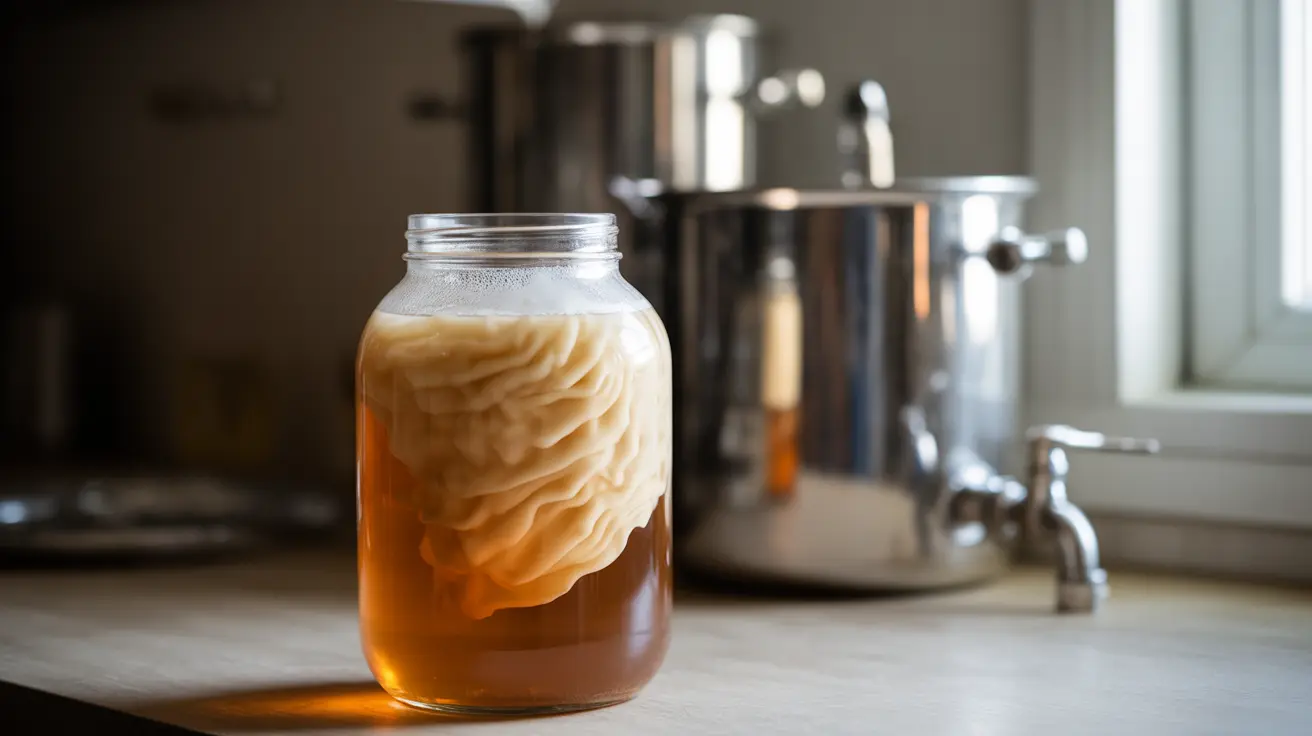Kombucha's rising popularity has put its key ingredient, the SCOBY (Symbiotic Culture of Bacteria and Yeast), in the spotlight. This fascinating living culture is essential for transforming sweet tea into the tangy, probiotic-rich beverage that health enthusiasts have come to love. Understanding your SCOBY is crucial for successful kombucha brewing and maintaining its health benefits.
In this comprehensive guide, we'll explore everything you need to know about kombucha SCOBY, from its health benefits to proper maintenance and safety considerations. Whether you're a first-time brewer or looking to improve your kombucha-making skills, this information will help you navigate the world of fermented tea with confidence.
What is a SCOBY and How Does It Work?
A SCOBY is a living matrix of beneficial bacteria and yeast that work together to ferment sweetened tea into kombucha. This pancake-like structure typically appears cream to light tan in color and has a rubbery, gelatinous texture. During fermentation, the SCOBY converts sugar into beneficial compounds, including organic acids, enzymes, and probiotics.
The fermentation process typically takes 7-14 days, during which the SCOBY transforms the sweet tea mixture into a slightly acidic, effervescent beverage. Each batch of kombucha will produce a new layer of SCOBY, often called a "baby SCOBY," which can be used to start new batches.
Health Benefits and Potential Risks
Kombucha made with a healthy SCOBY offers several potential health benefits, including improved gut health, enhanced immune function, and potential antioxidant properties. The fermentation process creates beneficial compounds such as gluconic acid, acetic acid, and various B vitamins.
However, it's important to note that kombucha isn't suitable for everyone. Those with compromised immune systems, pregnant women, and individuals with certain medical conditions should consult their healthcare provider before consuming kombucha.
Proper SCOBY Care and Maintenance
Maintaining a healthy SCOBY requires attention to cleanliness and proper environmental conditions. The ideal temperature range for SCOBY storage is between 68-78°F (20-26°C). Always use clean, chlorine-free water and avoid metal containers, as they can react with the acidic kombucha.
Essential Care Tips:
- Store in a glass container
- Keep away from direct sunlight
- Maintain proper pH levels (2.5-3.5)
- Use clean equipment and hands when handling
- Keep the brewing area free from contaminants
Signs of a Healthy vs. Unhealthy SCOBY
A healthy SCOBY should be cream to light brown in color, with a firm, smooth texture. It might have stringy bits hanging down, which is normal. The tea should smell pleasantly sour, similar to apple cider vinegar.
Warning signs of an unhealthy SCOBY include:
- Black, green, or blue spots (indicating mold)
- Fuzzy patches of any color
- Strong, unpleasant odors
- Dry, flaky texture
If you notice any of these signs, it's best to discard the SCOBY and start fresh.
Frequently Asked Questions
What are the benefits and risks of drinking kombucha tea for gut health? Kombucha tea can support gut health by providing beneficial probiotics and organic acids. However, risks include potential contamination if not properly prepared, and excessive consumption may cause digestive discomfort or acidosis in sensitive individuals.
How do I properly care for a kombucha SCOBY to prevent contamination? Maintain strict hygiene practices, use clean equipment, store at appropriate temperatures (68-78°F), and use only glass containers. Always handle the SCOBY with clean hands and keep it away from metal utensils.
Can kombucha help with weight loss or digestive issues, and what's the scientific evidence? While some studies suggest kombucha may aid digestion and metabolism, scientific evidence is limited. The beverage's probiotics and acids may support digestive health, but more research is needed to confirm specific weight loss benefits.
Is it safe for pregnant women or individuals with chronic conditions to consume kombucha? Pregnant women and those with chronic conditions should consult their healthcare provider before consuming kombucha. The unpasteurized nature and potential alcohol content pose risks for certain individuals.
How can I distinguish between a healthy SCOBY and one that's gone bad or developed mold? A healthy SCOBY should be cream to tan colored, smooth, and firm, with a clean, vinegar-like smell. Any signs of mold (fuzzy patches, unusual colors), strong offensive odors, or dry, flaky texture indicate the SCOBY should be discarded.




